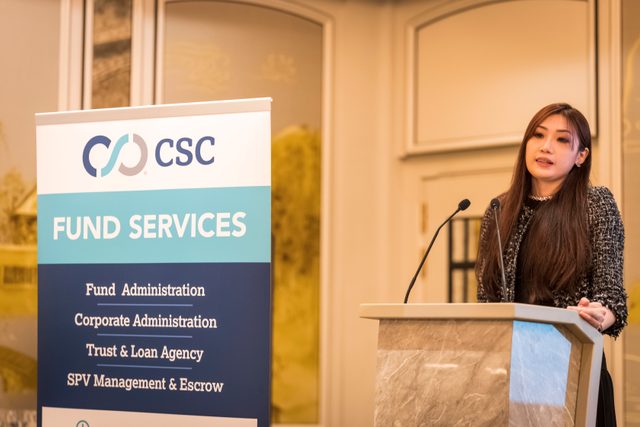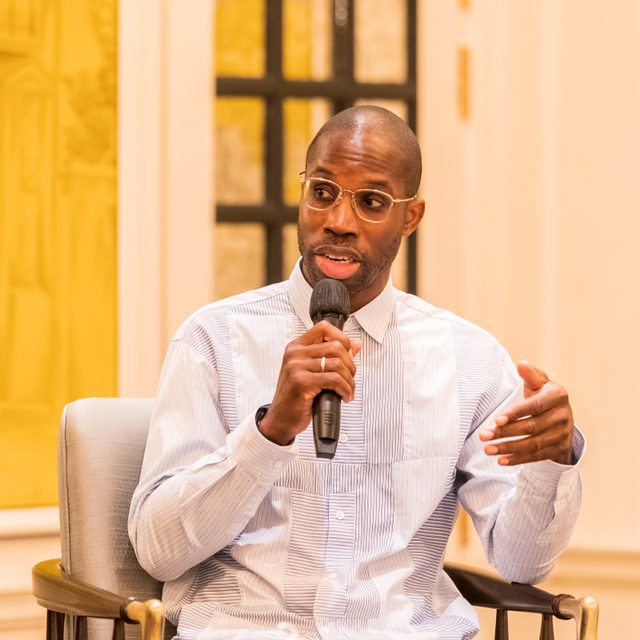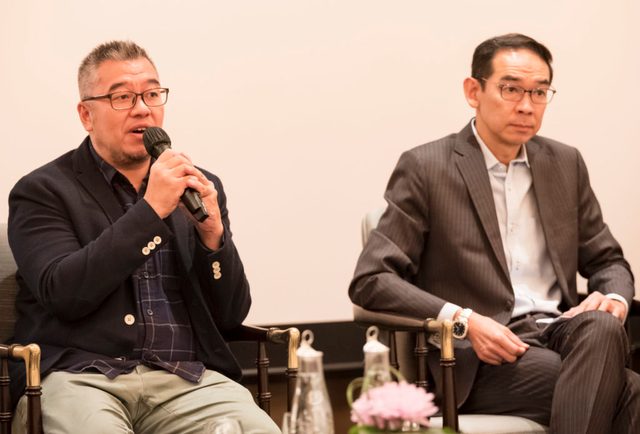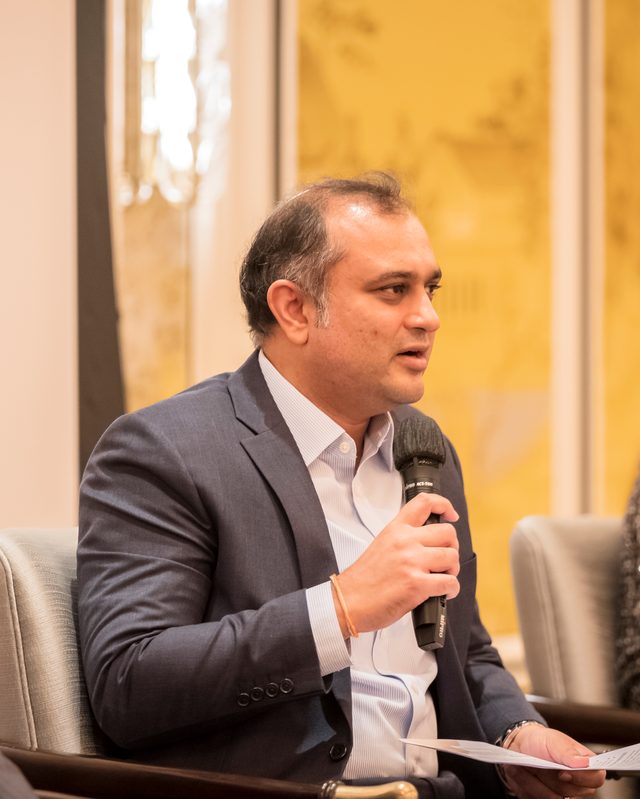Partner content in association with
ESG, onshoring, tech investments, and local IPOs will power Asia growth story through 2022 and beyond
(left to right): DealStreetAsia’s Joji Philip; KPMG’s Teo Wee Hwee; ShookLin & Bok’s Tan Woon Hum; Capital Square Partners’ Anupum Khaitan; CSC Global’s Agnes Chen, and Golden Gate Ventures, Michael Lints
In December 2021, DealStreetAsia in partnership with CSC Global launched ‘Investment Offices Flourish As Wealth Finds Green Shoots’ — a data-backed white paper on the wealth management opportunity in Asia. The report served to initiate a panel discussion at an exclusive event in Singapore, this April. Before an audience of investors and professionals in the wealth management space, a high-profile panel representing the worlds of private capital, consulting, and fund and corporate administration elaborated on many of the themes raised in the report: the Asia growth story; preferred asset classes for investments; the risk factors that investors and wealth managers ought to be cognisant of; and the state of play when it came to onshoring versus offshore structures.
The panel included Teo Wee Hwee, partner and head of real estate and asset management (tax) at KPMG; Tan Woon Hum, partner and head of trust, asset & wealth management practice, at law firm ShookLin & Bok, and Agnes Chen, managing director – APAC at CSC Global Financial Markets. Representing the worlds of private equity and venture capital were Anupum Khaitan, executive director of Capital Square Partners; and Michael Lints, partner at Golden Gate Ventures.
Joji Philip, editor-in-chief at DealStreetAsia who was moderating the panel, pointed out that 2021 had been a record year for Asia. Private capital investments in Southeast Asia alone cornered $25.7 billion in both debt and equity. However, Philip added, “After an era of excess liquidity with very loose fiscal and monetary policy, 2022 is turning out to be very different. Suddenly all the news is on high inflation, market volatility, and rising geopolitical risk.”
However, investor confidence in the region remained high – even if the focus markets had shifted. In Southeast Asia, Indonesia and Vietnam had grown in influence, even as China had lost some of its sheen, after recent regulatory interventions in the tech sector.

CSC’s Agnes Chen said, “Policies in China have not been very predictable. I would caution that anything that has not been regulated yet, will be in due course. Anything that is going through regulation will only be regulated more thoroughly. In the past, it has always been about very quick growth without much governance. A lot of the current focus is on data and consumer protection as well as sustainability. Any developed country has probably gone through this phase.”
VC and PE were likely to continue on their growth trajectory, particularly in Southeast Asia. However, all parts of the industry were not going to expand at the same pace. Golden Gate Ventures’ Lints said, “We are going to see local and regional investors put to work the capital that they have raised or are currently raising. They are going to be slightly more aggressive at seed and Series A stages. There’s some compression at the later stage. Investors are asking – what does sustainability look like for this specific company? Are they going to depend on fundraising for the next five to six years, or will they be self-sufficient?”
In the private equity space, Capital Square Partners Khaitan believed that Asian companies in the tech sector were perhaps best placed to weather the inflationary pressures of 2022. While the quantum of PE investments was on the rise, he added, “Historically, Southeast Asia has received the marginal dollar. It’s never been the primary directive of any Western capital allocator and has received money only after China and India. It has to work harder, show better returns, and higher performance.” Where the opportunity for PE firms existed was in helping founder-led businesses in the region professionalise and ease their access to capital markets.
Another huge fillip to business in the region – particularly for a central hub like Singapore – was the opportunity presented by economic substance regulations that had made offshore destinations less attractive. KPMG’s Teo Wee Hwee said, “Investors are increasingly not comfortable being associated with a tax haven. The introduction of various regulations in the Caymans makes setting up and maintaining a fund there a lot more expensive.” Discussing the push towards onshoring, ShookLin & Bok’s Tan Woon Hum added, “It is happening in three batches. The first are clients who moved out before the clampdown. The second, those who are trying to get out and finally – those who want to get out, and are asking us how, but for whom it may be a bit too late.”
The second aspect was the situation in Hong Kong. Singapore was emerging as a preferred destination with Hong Kong being bypassed. He added, “The writing is more than on the wall: Hong Kong is treated in a certain way by the Beijing government. People have realised that they need a plan to move capital, talent, and team. Even state owned and privately held companies controlled by Chinese nationals, have given up their Securities and Futures Commission of Hong Kong (SFC) license and started in Singapore.”
Environment, Social and Governance (ESG) focused investing also came up as a theme gaining favour in the region among investors. Chen said, “If we consider Asian family offices or investors in the region, their portfolios are generally less focused on ESG elements, when compared to a European or Europe-focused investor. That’s because ESG initiatives have only just begun to gain ground in this region. But considering the numbers, the ESG element is increasingly important — I’ve seen a report that said it accounts for at least 10% of a portfolio allocation.” The need for market standards in terms of ESG indicators, data and tools to measure the impact would get increasingly critical, with investors already quizzing administrators about these aspects, she added.
Click here to watch a video of the event and read on for a transcript of the discussion, edited for brevity and clarity.
What are your views on the Asia opportunity?
Teo Wee Hwee: Asia is a very diverse continent with different cultures. But what is more important is the middle-income segment, with many hardworking, smart, young people. Politically, it’s quite stable compared to other continents. That’s why you should invest in Asia.
How are the private capital markets going to play out in 2022?
Tan Woon Hum: We are lawyers serving the fund managers: LPs, GPs, and family offices. Anecdotally, in the last 12 months, based on the forward-looking discussions we have with clients and prospects, the private market is very active. Some clients are looking at the US based startups as well as Israel.
It was easier before the clampdown by the Chinese government put a stop to the tech space and decentralised finance (defi) that was growing tremendously. People are still looking at China and Indonesia for PE-VC deals, while for India it’s a bit of a start-stop. With the Ukraine war, and high commodity prices, it’s going a bit sideways.
There are two big positives for Southeast Asia: a durable domestic consumer market, and economies that have an export heavy commodities component. Do you see the LP appetite for Southeast Asia continuing?
Anupum Khaitan (AK): Two things are happening: a commodity megacycle and a possibly hyper inflationary environment. The West can remain resilient as the main supplier of global capital.
However, many Asian economies need that capital. They may have natural resource stocks, but on the flip side, are still net importers. Interest rates matter to them for their currency and consumption. The consumer cycle is going to slow down in Asia, in this inflationary environment. Ultimately, that means tech investments will do well. Tech is a disinflationary investment. It tries to solve a hard problem that is known among various constituents: businesses, consumers, or governments. It provides an opportunity for fund managers and the ecosystem to succeed. Ultimately, tech will help Asia survive.
Between real estate, infrastructure, tech, PE, VC, and even cryptocurrencies, are you seeing any shift in the nature of investments?
Agnes Chen (AC): VC and PE are among the global growth engines. They have remained stable over the last two years, even during pandemic and geopolitical crises.
But we also see new asset classes coming up: ESG and climate funds, for example. Private debt is another asset class that has been going strong, including new engines such as blockchain and cryptocurrency. There are some restrictions from certain jurisdictions in terms of how and what you can invest in. But asset classes such as NFTs which are still in development have also come up. We see a shift in global investments, even within our portfolio and from what we read in global reports.
There have been a record number of vehicles that have been raised in the region. Do you think this provides a very strong foundation for 2022, and a more diverse distribution of capital across not just countries, but sectors?

Michael Lints (ML): A few years ago, the exits in the region were almost too early. If you were at Series B or Series C, you couldn’t find a counterpart to fuel the cap table and raise a round. Even a good performing company would settle for an M&A instead of an equity round. Now we are seeing a lot of companies raise Series B, C or D rounds at very healthy and sometimes expensive valuations.
That being said, I’ve spoken with a lot of LPs over the past few months and they are concerned about capital coming into the region. It’s not just local funds that have raised money, but funds from the US. The LPs are asking, ‘How’s the dynamic going to play out for the region?’ ‘Is it a hype cycle?’ ‘Will we see US funds leave over the next few months or is it something that is going to be continuous for the region?’ Overall, I’d say it’s been a very good foundation, but it’s also important that we see sustained change within the space.
Among the biggest recent talking points has been the GoTo IPO. Its performance is supposed to be a huge indicator of how attractive Southeast Asia and Indonesia will be. Is it going to set the tone for the region as well as Indonesia’s tech sector?
ML: There is a yes and a no part to this answer. It’s one of the biggest IPOs globally, so of course the market is looking to see if its performance is for the short or long term, and how sustainable the valuation is. But if you go back to last year, in November, we said the same about Grab. If you have followed its stock price, it’s down to about 70%.
So, I’m very conscious of not saying one company determines the outcome for an entire region. We are shareholders in GoTo and of course wish them the very best. But there are a lot of amazing companies at the pre-IPO stage that will come to fruition over the next few years. What is important is that GoTo has shown that you can list in the region. We will see more companies list in Indonesia over the next few years.
In 2021, at least through the first half, everybody was thinking about SPACs as a route to exit, especially for companies in Southeast Asia. How do you see the road ahead, now that the enthusiasm has died down?
AK: That’s the million-dollar question. SPACs came around in 1999 and 2000, roared again in 2008 and then in 2020 and 2021. Have you ever heard the expression –‘This time it’s different?’
It turns out that this time was actually not very different. On a pure macro-economic basis, you can see how SPACs have done. It is because they have misaligned incentives among various constituencies.
The sponsor behind the SPAC and the actual entrepreneur behind the startup are doing a bilateral deal. The entrepreneur is trying to see who can pay top dollar and provide operational support as the startup becomes a public company. However, the people who end up holding the actual investment are the shareholders, and they don’t really have the same level of information or due diligence.
SPACs have also been notoriously around to provide liquidity to companies that needed it and couldn’t not get it elsewhere. Perhaps exacerbated by a hyperinflationary environment, you are seeing SPACS not do as well, but that is pretty systematic and typical of their past behaviour.
With that said, it’s very interesting how Singapore is approaching the market. There are notable household names such as Vertex and Vickers here. But we have many other companies, GPs, and investors trying to do SPACs. The fact that the sponsor is forced to take an ownership stake, and hold the investment, unlike in the United States, will hopefully align the incentives correctly. Singapore is able to provide an avenue of liquidity, but also to do it in a way that’s fiduciarily responsible to all involved.
In 2021, the total amount raised in IPOs was $140 billion with 633 listings in China. IPO proceeds increased by 7.1% when compared to 2020. Hong Kong continues to be the go-to market for the big IPOs. But looking beyond these numbers, do they present the true story considering China tech stocks had one of their worst years in 2021?
AC: As we are fund administrators and not managers, from observation in the market and some data, 2021 has done really very well in terms of IPO listings.
If you look at Q1 of 2022, there have been 324 deals and $54 billion in proceeds. These are great numbers, but they mark a 37% decline compared to last year. While the numbers are still very good, there is some hesitation in terms of whether people should actually go ahead. It really depends on what happens next: whether its geopolitical relationships, supply chain, inflation rates, or even COVID.
We do see local listings to be the next popular aspect. On the one hand, governments are looking at promoting such listings. At the same time, there is political tension that triggers companies to rethink going to a different jurisdiction to list.

How do you see the liquidity scenario panning out in 2022?
Teo Wee Hwee: I suspect that there’s still a lot of dry powder. When it comes to private deals, I think IPOs will happen but will be more local rather than global.
We are seeing family offices invest not just in tech but across sectors. Which structures do family offices consider attractive?
Tan Woon Hum: There are single family offices and private families who are, in my estimation, very rich. The ticket size is northwards of about $50 million, and family offices have an AUM of probably over $200 million.
They will never tell me how much they are worth, nor will the banks! But my estimation is that they are in the billion-dollar bracket.
They are from Singapore, Europe, North Asia, Indonesia as well as India. In terms of where they’re deploying: they set up private label or single-family funds, variable capital companies (VCC) or funds that are managed by licensed managers. Where they deploy is multi-strategy. Long term capital appreciation and preservation, but maybe about 10% to 30% allocated to risky assets. Those go into private credit, even crypto, defi, and PE-VC. In terms of regions, it’s quite spread out. It used to be China before the clampdown. We see some in Vietnam, Indonesia, and a little bit in India
In the second half of last year, Southeast Asia focused PE funds raised close to $3 billion — three times the corresponding period in 2020, and more than double that of 2019. There are 34 Southeast Asia focused funds that are currently in the market, looking to raise close to $7 billion. They’ve already made interim closes for about $3 billion. There are at least 44 global PE funds that have invested in Southeast Asia. If you consider global funds that even put 10% of their allocations to Southeast Asia, that’s an additional $9 billion to $10 billion of capital. Do these data points indicate that the PE landscape in Southeast Asia is still relatively small and ripe for acceleration?
AK: Based on my estimation roughly about $20 billion is being or has been raised in the past 12 months. The very fact that we are raising so many billions proves that there is a lot of opportunity and interest among LP investors to allocate to South and Southeast Asia.
But historically, Southeast Asia has only received the marginal dollar. It’s never been the primary directive of any Western capital allocator. It has received money only after China and India, with respect to Asia. But then also after the United States and Europe. It has to work harder, show better returns, and higher performance.
In Asia, there are many more SMEs and founder-led businesses today. These companies tend to have less corporatisation. They are very sophisticated when it comes to operating and delivering on their services, across geographies within Southeast Asia. But they are also not as sophisticated when it comes to capital markets.
An area where PE can really make an impact is to work with these founder-led businesses, to help them professionalise and become more efficient in accessing capital markets. It provides a great opportunity, particularly with GPs who are a little more patient, and looking to develop an ecosystem.
It’s a win-win because ultimately, these companies are going to be valued based on their current operating performance when they are bought. But after being corporatised and having efficiencies of scale, they will tend to outperform in the long run. But ultimately, it’s the LP investors who really depend on the returns of PE as an asset class, who will also succeed. Ultimately, that provides us with a better world to live in.
To turn to the VC space, we have seen a 51% increase in seed deal volume, with an 81% increase for series A; 85% for Series B, and a 45% increase in Series C. Earlier, Series D and E were not very common in Southeast Asia. But in 2021, we had as many as six to eight Series D rounds and 12 Series E transactions. Even the median value of seed funds is $1.6 million; earlier it used to be around $200,000. Do you see these numbers trending up in 2022?
ML: The numbers will continue to trend up at the very early stage — seed and Series A. You will see Series A rounds of even $15 million to $20 million.
In 2021, we saw new investors — hedge funds putting money into early-stage companies — something we’ve never seen before in Southeast Asia. That trend is at an end since those hedge funds have their own challenges. I don’t think they’re going to be as aggressive as they were last year.
But we are going to see local and regional investors who raised capital in 2021 or are raising right now, put it to work. Those funds have been getting larger. They are going to be slightly more aggressive at seed and Series A stages. Where there’s some compression is at the later stage, because there’s a demand for more sustainable metrics. We are seeing more scrutiny because of the current economic situation. Investors are asking – what does sustainability look like for this specific company? Are they going to depend on fundraising for the next five to six years, or will they be self-sufficient?
How do VCs assess new asset classes like crypto and NFTs?
ML: The NFT space last year reminded me of 2016 where we had the big initial coin offerings and everyone and their grandmother — even mine — was investing in crypto. It was slightly similar in the beginning: every single friend owned a Bored Ape, Karafuru, or Tasty Bones. People now want to know what exactly is happening in this space. Across NFTs, the prices are down as opposed to last year.
People are asking for utility. Musicians, artists, the sports world are now betting heavily on NFT. From an investment standpoint, for the first time ever, I’ve seen an industry where Southeast Asia can actually leapfrog some of the global players. I’m seeing NFT artists from Indonesia, Vietnam, and the Philippines trending globally. We have defi companies being launched here, and wallets from Singapore becoming global players. The outlook is very bullish and we are seeing more funds focus on this as well.
How do you see both family offices, LPs, and GPs incorporating ESG and climate tech funds into their mandates?
AC: This has been on the rise with globalisation and an increase in environmental considerations. It’s not just restricted to LPs and investing. We see this at a national level, in commitments from governments to promote such initiatives and shaping regulations. For instance, Hong Kong’s SFC as well as Singapore’s MAS have come up with recommendations for fund managers to consider ESG as one of the components in their portfolio.
This has definitely shaped investments that have gone into ESG. If we consider Asian family offices or investors in the region, their portfolios are generally less focused on ESG elements, when compared to European or Europe-focused investors. That’s because ESG initiatives have only just begun to gain ground in this region.
But if you consider the numbers alone, the ESG element has become increasingly important — I’ve seen a report that said it accounts for at least 10% of a portfolio allocation. The type of ESG focus is also quite personal and subjective. It really depends on what the family or investor is looking at. But we still lack market standards in terms of ESG indicators, data, and tools. This is something we ought to pay attention to and will become more important. We’ve seen investors looking for administrators, questioning them about ESG, corporate governance etc.
Are we seeing any other structures or vehicles when it comes to investing in Southeast Asia?
Teo Wee Hwee: Not surprisingly, over the past two years, we have seen many funds using the Singapore structure — variable capital company or VCC introduced in 2020. Several clients who traditionally used Cayman structures, are starting to use VCC for a number of reasons.
Many of them are relatively new, homegrown fund managers. The investors too are atypical and very happy to explore new structures. The grant given by the Monetary Authority of Singapore (MAS) helps as well. Investors are increasingly not comfortable being associated with a tax haven structure. The introduction of various regulations in the Caymans makes setting up and maintaining a fund there a lot more expensive. All these factors have contributed to the growth of VCC and it could continue to grow, particularly for family offices. In Hong Kong, they’ve introduced the Hong Kong Limited Partnership structure that has garnered some attention as well, but predominantly from local investors.
From a structuring perspective, the other point worth mentioning is tokenisation. Increasingly, we’re talking to a lot of people who are very interested to tokenise their funds, or real estate or just about anything — even art pieces. That’s probably something that’s up and coming, from a structuring perspective.
What sort of a response have you seen towards onshoring?
Tan Woon Hum: It has been a tremendous plus for Singapore. The first factor is the economic substance requirements imposed on tax havens. It may not be the final nail in their coffin, but it’s certainly another nail.
None of my fund manager clients have moved themselves or their teams to Cayman or BVI. In fact, everybody has on-shored. At the moment a GP can still be there, but the taxman is going to catch up. We hear anecdotally that the Inland Revenue Authority of Singapore (IRAS) as well as tax authorities in Indonesia, Malaysia, and China, have all been calling. Some fund managers and family offices are asking ‘How come you have seven BVI companies and three Cayman structures? What have you not told us over the last 10 years?’ You don’t want to spend the next six months answering those questions!
It is happening in three batches. The first are clients who moved out before the clampdown. Second: those who are trying to get out. And finally those who want to get out, and are asking us how, but for whom it may be a bit too late.
The second aspect is the situation in Hong Kong. Back in 2019, the first wave of early movers had already begun, having a plan B in place, and a satellite team in Singapore. The security lockdown last year resulted in a second wave. Now, because of the clampdown, the writing is more than on the wall. People have realized that they need a plan to move capital, talent, and team. But instead of moving from Cayman or BVI to either Hong Kong or Singapore, many of them bypass Hong Kong and come here, instead. Even state owned and privately held companies controlled by Chinese nationals, have given up their SFC license and started in Singapore.
A few questions to wrap up: is the era of easy money over? How big a challenge is monetisation considering the fact that we don’t really have any profitable tech startups in this region?
ML: In terms of easy money, good companies will continue to fundraise at a very fast pace. Where it’s going to get a little tricky is the raises between Series B and D. Larger investors are going to demand more data and proof points that this business is going to be sustainable. We will see those fundraise periods extend as opposed to 2021.
I don’t think easy money is ever going to go away. It’s just going to take more time for these companies to fundraise. Post WeWork, there were questions around sustainability and profitability for a few months. Now, that’s returning with a vengeance.
As the restrictions are lifted, do you see a lot more PE capital flowing into real sectors such as factories? Do you see infrastructure deals coming back? What about travel and hospitality?

AK: While the hyperinflationary environment is really going to be a struggle, Asia has historically benefited and will continue to gain from arbitrage in labour, overall costs, and many other factors.
Clearly, there is a view to shift production and manufacturing outside China. Vietnam has been the biggest beneficiary. Other markets like Malaysia and Bangladesh might come up and do well. Malaysia is already a developed society, with values that are much more attractive than they are elsewhere.
Bangladesh, on the other hand, is also going to provide a major opportunity to a lot of investors, primarily because it has everything that Vietnam has going for it, except it’s been underappreciated and underinvested in, historically. Investors will look at markets like these and realise there’s an opportunity. Not just for a first mover advantage, but to invest appropriately and meet the internal rate of return expected by an LP investor. They also offer the overlay of ESG and impact, which helps create a new ecosystem which is beneficial to all.
Which sectors will do well in China for the rest of 2022 and beyond?
AC: We have offices in China and I monitor it on a daily basis. Policies in China have not been very predictable. I would caution that anything that has not been regulated yet, will be in due course. Anything that is going through regulation, will only get regulated more thoroughly. In the past, it has always been about very quick growth with not much governance. Now the focus has shifted to data protection, sustainability, as well as consumer protection. Any developed country probably goes through this phase. Anything related to ESG, food tech, or health tech will be very popular. But a lot of the confidence will be vested in large PEs and companies because they have the capability and resources to ensure the good credit governance that China is looking for.
The event was organised by DealStreetAsia in partnership with CSC Global. Please click here for a video of the event and follow this link for a copy of the report ‘Investment Offices Flourish as Wealth Finds Green Shoots’

